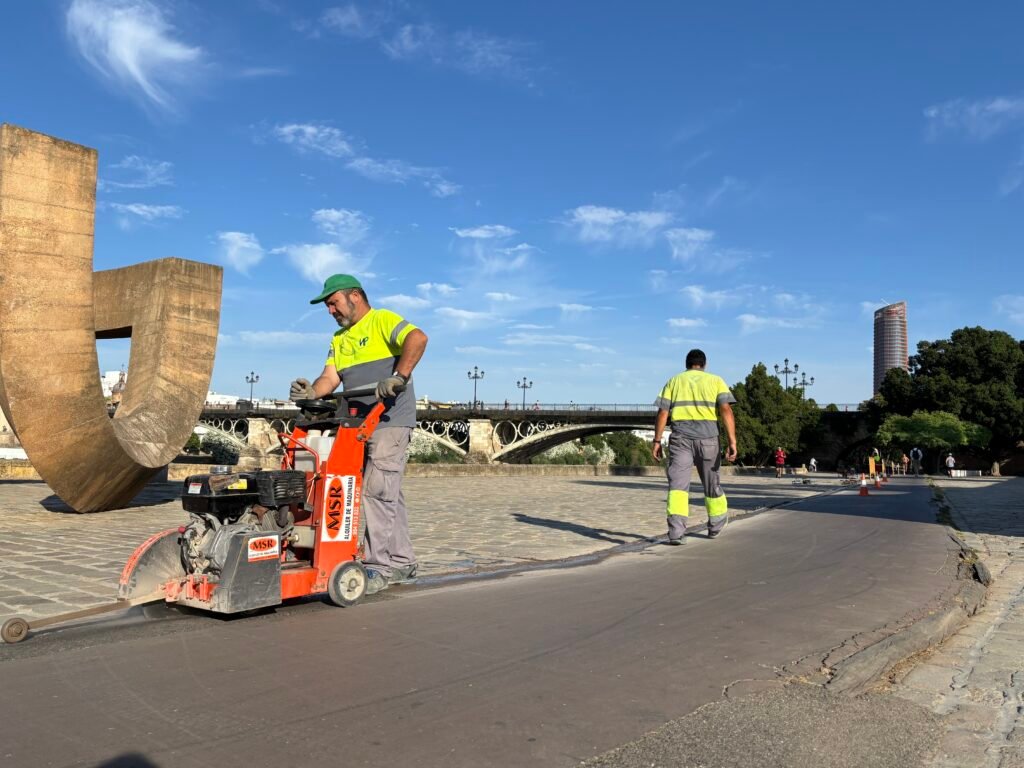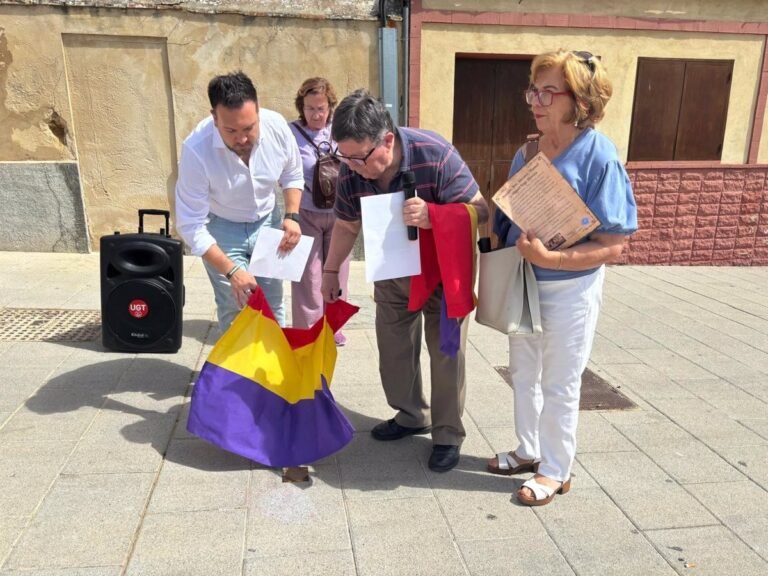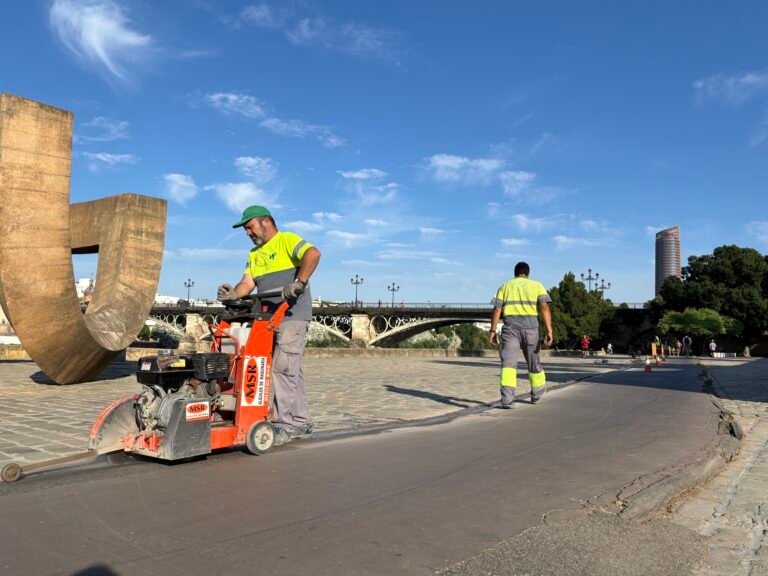
The Seville City Council, through the Urban Planning Department, has started renovation works on the bike lane that runs along the Muelle de la Sal, the section between the Triana and San Telmo bridges, next to the river dock. The city council has begun these works in order to completely renovate this infrastructure, which is currently in very poor condition.
The Urban Planning Delegate, Juan de la Rosa, highlighted that «we will solve the major problems presented by the Muelle de la Sal bike lane, which currently has widespread deficiencies in both the pavement and the wooden slats that delimit it.» This intervention demonstrates that «we continue to work to ensure that the bike lanes in our city are in optimal conditions and do not pose any risk to cyclists,» added the councilor.
In the same vein, de la Rosa pointed out that «this section will be replaced by a new installation that will offer better conditions and will also improve the aesthetics of the current bike lane next to the river.»
Currently, the city council is building, or plans to start in the coming months, a total of 17.4 kilometers of new bike lanes. This will add around 220 km of cycling routes to the city and will involve a total investment of over 14 million euros. Seville is the third Spanish city with the most kilometers of cycling routes, behind only Barcelona and Zaragoza.
This bike lane, about 200 meters long and 2.50 meters wide, is currently made up of a platform of asphalt aggregate placed on a granite cobblestone roadway and delimited by wooden slats anchored to the pavement, which is currently in very poor condition due to the passage of time and exposure to the elements.
This action, with a cost of 50,600 euros and an estimated execution period of one month, includes the dismantling of the wooden slats and the metal anchors that hold them, the subsequent cleaning of the asphalt along the entire edge of the bike lane, and the creation of a side molding.
Regarding the surface of the bike lane itself, before the placement of the moldings, the current asphalt will be planed and firmly prepared for the new colored treatment that will be applied, finally applying a sealing layer with high-resistance resin paints.
Construction of the bike lane for access to Seville from La Rinconada and the start of the new route around the Pabellón de la Navegación
A couple of months ago, the council also began construction on the new section of the north access bike lane to Seville from La Rinconada. This involves the construction of another 2.5-kilometer cycling route with a budget of 3,096,465 euros, and work is scheduled to begin next March.
This access route to Seville from La Rinconada is part of a package of new metropolitan cycling lane projects that are part of the ambitious plan of Jose Luis Sanz’s government to renew and expand the cycling network throughout Seville to advance connections with the municipalities of La Rinconada, Dos Hermanas, or Alcalá de Guadaíra. This operation constitutes a joint plan of these four municipalities for the creation of a Low Emission Zone in the metropolitan area through a network of cycling itineraries, funded by the European Next Generation funds.
Furthermore, in April, the contract was awarded for the construction of a new cycling route next to the Pabellón de la Navegación, on the Isla de la Cartuja. In addition, the Seville City Council will rebuild the bike lane that runs along the sidewalk of the perpendicular street Francisco de Montesinos, next to the fence enclosing the outer gardens of the Monastery of La Cartuja. The sidewalk where this bike lane is located is severely deteriorated, so it will be completely redeveloped, introducing a series of improvements over the current state.
These sections, as de la Rosa highlighted, «add to the three new bike lanes that are currently under construction and have a total budget of over 4.7 million euros.» These include the 1.6-kilometer route on Avda. de San Jerónimo, the 1.7 kilometers on Avenida de Jerez, between the Guadaira River bridge and Avenida de Finlandia, and the stretch from the Congress Palace to Valdezorras, where a 1.1-kilometer section is being built.






